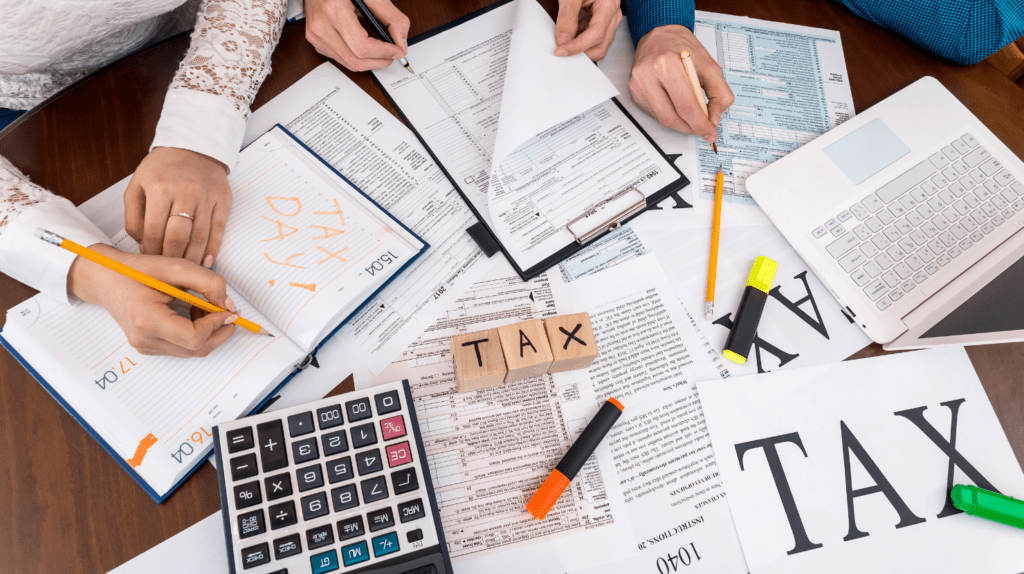
Tax day is one of the most important—and one of the most dreaded—days on the calendar for working Americans. Although April 15 is usually the date that federal taxes are due, the Internal Revenue Service has extended the deadline in the past. If you have picked up a side gig or transitioned to full-time self-employment, you will have to make estimated quarterly tax payments.
Not everybody who earns self-employment income needs to pay their taxes quarterly. Further, self-employed individuals are not the only earners who are subject to a quarterly tax payment structure. But if you need to make estimated tax payments, you need to know the payment deadlines for both federal and state withholdings. Otherwise, when tax day rolls around, you could find yourself facing an underpayment penalty.
Who Is Required to Pay Estimated Taxes?
Anyone who has income that is not derived from a salary paid by an employer may have to pay quarterly taxes. This includes those receiving income from the following sources:
- Self-employment
- Interest
- Dividends
- Alimony
- Capital gains from selling stock, bonds, and other assets
- A business, including rental property income
- Prizes and awards
However, you do not automatically have to pay estimated taxes if you have income from one of these sources. According to the IRS, you are generally required to pay estimated quarterly taxes if both of the following apply:
- You expect to owe at least $1,000 in federal income taxes when you file your tax return (after accounting for your withholding and refundable credits); and
- You expect your withholding and refundable credits to cover less than 90 percent of your tax liability for the year, or 100 percent of your liability for the last year (whichever is smaller).
Still not sure if estimated tax payments apply to your situation? Reach out to our tax lawyers for answers to your questions.
Why Do I Have to Pay Estimated Taxes?
All taxpayers should “pay as they go, so they won’t owe,” says the IRS. When you have an employer, you automatically pay as you go in the form of paycheck withholdings. Your employer withholds tax from your pay and sends it to the IRS on your behalf.
But when you do not have an employer, you are responsible for paying as you go. That is because income from self-employment, interest, dividends, rents, and other sources is not subject to withholding.
Failure to pay enough tax throughout the year—whether through withholding, estimated tax payments, or a combination of the two—could result in an underpayment penalty. The number of taxpayers subject to estimated tax penalties increased from 7.2 million in 2010 to 10 million in 2015, the IRS reports.
When Are Estimated Taxes Due?
As the name implies, estimated quarterly taxes are due once per quarter, or four times per year. The estimated tax payment schedule for 2023 is listed below. These payment dates are usually the same every year, but make sure to confirm the actual dates for each tax year. In addition to a tax penalty assessed for underpayment, you could receive a penalty for late quarterly tax payments.
| Income Period | Estimated Tax Payment Due Date |
| January 1 – March 31, 2023 | April 15, 2023 |
| April 1 – May 31, 2023 | June 15, 2023 |
| June 1 – August 31, 2023 | September 15, 2023 |
| September 1 – December 31, 2023 | January 15, 2024 |
How Do I Pay Estimated Taxes?
You pay quarterly taxes directly to the IRS. To calculate the amount you owe, figure out your estimated tax burden for the entire year and then divide this number into four equal payments. For reference, you can use your tax return from the previous year to get an idea of how much you will owe. In fact, there are payment vouchers near the end of the tax return that make it easy to estimate your taxes.
It is better to overestimate than to underestimate due to the risk of an underpayment penalty. There is no harm in overpaying because you can get that money back in the form of a tax refund or apply the overage to future payments.
Taxpayers whose income varies from quarter to quarter might have to adjust this figure. The IRS has a Tax Withholding Estimator that can help you find your best estimate. Similar tools are available from other online sources, such as TurboTax.
The easiest way to make an IRS estimated tax payment is using IRS Direct Pay or the Electronic Federal Tax Payment System (enrollment required). You can also send a check or money order to the IRS. Regardless of how you pay, you will use Form 1040-ES. More information on all payment options is available at IRS.gov/payments.
Do I Have to Pay State Estimated Taxes?
Except for Utah, states also have estimated tax requirements. These are similar to federal requirements, but states have different income thresholds and penalties for estimated taxes, so make sure you understand the rules where you live. Look for the state payment vouchers on last year’s tax return if you are unsure of how much to pay.
Having income independent from an employer can be liberating. But with freedom comes responsibility. Being responsible for your own tax payments can raise several questions. Our attorneys are here to provide the help you need during tax season and year-round. Contact our office today to schedule an appointment.
